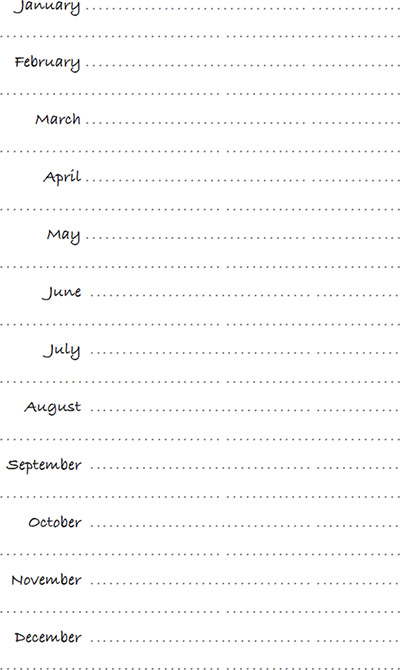![]()
TOOL 6
explore your terrain
In our daily lives of work, family, school, and friends, we rarely allow ourselves true intimacy with our own bodies. Getting to know our physical selves is an activity we postpone or avoid altogether in service of what we have been told are more essential responsibilities. Consequently, parts of us have gone unobserved, let alone touched, for decades. This neglect is not without cost. A 2003 National Health Interview Survey found that 57 percent of breast cancer survivors found their cancer through breast self-examination or by accident. We must touch our bodies, in all manner of ways and for all manner of reasons. It is impossible to be a responsible steward of a body we constantly avoid being intimate with. Building love relationships requires getting to know the other party. Our relationships with our bodies are no different. As we learn about them, we can access their unique power and gifts.
Knowing our bodies allows access to caring for our bodies, and caring for our bodies is an avenue for finding pleasure in them. Being disconnected from our bodies is often how we miss early diagnosis and intervention for health issues. When we are intimately familiar with our own bodies, we can advocate for our health, our safety, and our pleasure. Try on the three Es of your own terrain: exploration, examination, and ecstasy.
Exploration
Pick four parts of your body you rarely look at or think about and intentionally look at them. Using a hand-held mirror to look at parts that are difficult to reach, observe the shade, texture, and shape of each selected part of your body.
Draw two of the four body parts you choose to explore. If drawing is not your thing, describe them with words—and don’t feel limited to a literal description! Use metaphors or analogies. Be poetic!
Later, come back to this exercise and work with other parts of your body that you have not spent time with until you are familiar with your entire body.

![]() How did you feel when looking at this part of your body? What thoughts, emotions, or sensations came up for you?
How did you feel when looking at this part of your body? What thoughts, emotions, or sensations came up for you?


![]() How did you feel when looking at this part of your body? What thoughts, emotions, or sensations came up for you?
How did you feel when looking at this part of your body? What thoughts, emotions, or sensations came up for you?

Tips for Exploring Your Terrain as a Survivor
For some trauma and assault survivors, being present with their bodies can be a tremendously vulnerable and even frightening experience. Much of our experiences of harm get stored in the body, making it difficult to connect with our bodies in ways that feel safe. If these activities feel difficult, know that you are not alone in your experience nor are you failing at radical self-love. Below are some suggestions for navigating this tool. Use the structure of the three Es to invite intention and preparation into your bodily terrain practice.
![]() Make a date for exploration. Set a specific date and time for your practice. This will allow you to scaffold the experience with before and after care. Perhaps schedule a therapy session before or after, or plan a bath or other symbolic clearing activity afterward. You may want to debrief the experience with a trusted friend.
Make a date for exploration. Set a specific date and time for your practice. This will allow you to scaffold the experience with before and after care. Perhaps schedule a therapy session before or after, or plan a bath or other symbolic clearing activity afterward. You may want to debrief the experience with a trusted friend.
![]() Talk with your body. Practice speaking aloud what you are going to do with your body and include your intention in the statement—for example, “I am going to lovingly hold my belly.” This practice helps your body’s nervous system anticipate what is going to happen. Trauma often involves a lack of consent or autonomy. Speaking to your body invites the energy of care and relationship to the experience.
Talk with your body. Practice speaking aloud what you are going to do with your body and include your intention in the statement—for example, “I am going to lovingly hold my belly.” This practice helps your body’s nervous system anticipate what is going to happen. Trauma often involves a lack of consent or autonomy. Speaking to your body invites the energy of care and relationship to the experience.
![]() Connect with the breath. As you prepare and as you are actively touching your body, invite a deep breath to that part of the body, and remember to take long, slow, regular breaths. Breath reminds your nervous system that you are not in danger and welcomes life energy to parts of your body that have been subjected to harm.
Connect with the breath. As you prepare and as you are actively touching your body, invite a deep breath to that part of the body, and remember to take long, slow, regular breaths. Breath reminds your nervous system that you are not in danger and welcomes life energy to parts of your body that have been subjected to harm.
![]() Seek out healing tools. In the book The Body Keeps the Score: Brain, Mind, and Body in the Healing of Trauma, author Bessel van der Kolk discusses how trauma lives in the body and highlights the necessity of addressing the mind-body connection in healing from trauma. Treatment options such as EMDR (eye movement desensitization and reprocessing), somatic practices, and creative arts therapies are potential modalities for supporting your continued healing. Consider adding them to your self-care practice.
Seek out healing tools. In the book The Body Keeps the Score: Brain, Mind, and Body in the Healing of Trauma, author Bessel van der Kolk discusses how trauma lives in the body and highlights the necessity of addressing the mind-body connection in healing from trauma. Treatment options such as EMDR (eye movement desensitization and reprocessing), somatic practices, and creative arts therapies are potential modalities for supporting your continued healing. Consider adding them to your self-care practice.
Examination
Understanding our unique terrain gives us access to awareness. With awareness, we can be alerted when something is off-kilter with our bodies. Noticing skin discoloration or variations in our body mass gives us the information we need to advocate for our well-being. Doctors are fantastic, but they do not know your body better than you. Examination makes you an expert in you, and you should be.
Home exams are one of the most common ways we can detect if something unusual is happening with our bodies. If you are unfamiliar with the steps to do home breast and testicular exams, check out the following sites, which can walk you through these self-checks.
• Maurer Foundation’s “How to Do a Breast Self-Exam (BSE),” https://www.maurerfoundation.org/about-breast-cancer-breast-health/how-to-do-a-bse-breast-self-exam/
• American Academy of Pediatrics’ “Testicular Self-Exam,” https://kennesawpediatrics.com/files/8113/8686/0784/TesticularExam_HE0274.pdf
![]() When is the last time you did a monthly home breast or testicular exam? What did you notice?
When is the last time you did a monthly home breast or testicular exam? What did you notice?

Check in for a Monthly Checkup
Add a monthly exam practice to your calendar and record your exam details for each month below.

Ecstasy
Our bodies are designed for pleasure, but so many of us deny ourselves the riches of our own sensual touch. Too many of us treat ecstasy like a naughty word. Our bodies are made to feel good, and there ought to be no shame for enjoying the powerful and pleasurable sensations we have access to in them. When we touch ourselves sensually and sexually, we are not just getting ourselves off (which is wonderful); we are becoming masterful tour guides for our lovers. We know all the most breathtaking views and the best places to dine! Giving ourselves pleasure is a powerful way to teach others how to please us. Radical self-love is built on the foundation of intimacy with our bodies. Get intimate with your body and it will teach you and others how to love it.
What are the four most pleasurable sensations your body enjoys? For example, you might include “sand between my toes,” “pressure on my shoulders,” or “fingers on my scalp.” (Your choices can be sexual too.)

![]()
Choose one sensation from your list and spend five minutes giving yourself the sensation. Describe the experience below.

